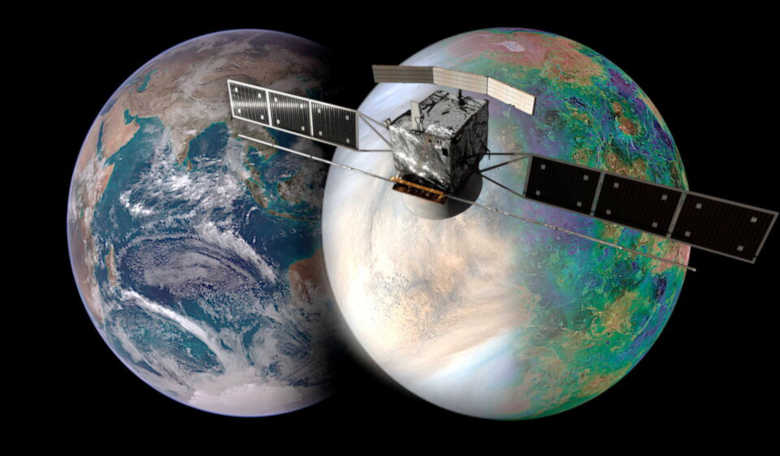EnVision will be ESA’s next Venus orbiter, providing a holistic view of the planet from its inner core to upper atmosphere to determine how and why Venus and Earth evolved so differently.
The mission was selected by ESA’s Science Programme Committee on 10 June as the fifth Medium-class mission in the Agency’s Cosmic Vision plan, targeting a launch in the early 2030s.
“A new era in the exploration of our closest, yet wildly different, Solar System neighbour awaits us,” says Günther Hasinger, ESA Director of Science. “Together with the newly announced NASA-led Venus missions, we will have an extremely comprehensive science programme at this enigmatic planet well into the next decade.”
A key question in planetary science is why, despite being roughly the same size and composition, our next-door neighbour in the inner Solar System experienced such a dramatic climate change: instead of being a habitable world like Earth, it has a toxic atmosphere and is enshrouded with thick sulphuric acid-rich clouds. What history did Venus experience to arrive at this state and does this foretell Earth’s fate should it, too, undergo a catastrophic greenhouse effect? Is Venus still geologically active? Could it have once hosted an ocean and even sustained life? What lessons can be learned about the evolution of terrestrial planets in general, as we discover more Earth-like exoplanets?
EnVision’s innovative instrument package will tackle these big questions. It will be equipped with a suite of European instruments including a sounder to reveal underground layering, and spectrometers to study the atmosphere and surface.
The spectrometers will monitor trace gases in the atmosphere and analyse surface composition, looking for any changes that might be linked to signs of active volcanism. A NASA-provided radar will image and map the surface.
In addition, a radio science experiment will probe the planet’s internal structure and gravity field as well as investigate the structure and composition of the atmosphere. The instruments will work together to best characterise the interaction between the planet’s different boundaries – from the interior to surface to atmosphere – providing an all-encompassing global view of the planet and its processes.
EnVision follows on from ESA’s highly successful Venus Express (2005-2014) that focused primarily on atmospheric research, but which also made dramatic discoveries that pointed to possible volcanic hotspots on the planet’s surface. JAXA’s Akatsuki spacecraft has also been studying the atmosphere since 2015.
EnVision will significantly improve on the radar images of the surface obtained by NASA’s Magellan in the 1990s. Working together with NASA’s upcoming DAVINCI+ (Deep Atmosphere Venus Investigation of Noble gases, Chemistry, and Imaging) and VERITAS (Venus Emissivity, Radio Science, InSAR, Topography, and Spectroscopy) missions, the trio of new spacecraft will provide the most comprehensive study of Venus ever.











